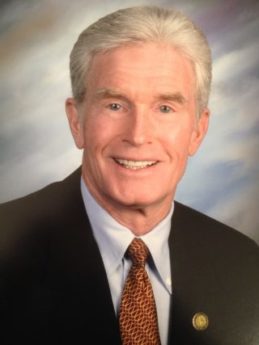HOME | ABOUT US | MEDIA KIT | CONTACT US | INQUIRE
HOME | ABOUT US | MEDIA KIT | CONTACT US | INQUIRE
Should we still expect four rate hikes ahead?
 Crude is back in the news following a shock oil output cut by major producers in the OPEC+ group. Crude futures surged past $81 a barrel at the open on the first trading day of April, reaching their highest price since late January. With U.S. production still limited by President Biden’s policies, and with the U.S. entangled by both high inflation and environmental restrictions, oil prices have the potential of upending economic policies, including upcoming Fed rate hikes.
Crude is back in the news following a shock oil output cut by major producers in the OPEC+ group. Crude futures surged past $81 a barrel at the open on the first trading day of April, reaching their highest price since late January. With U.S. production still limited by President Biden’s policies, and with the U.S. entangled by both high inflation and environmental restrictions, oil prices have the potential of upending economic policies, including upcoming Fed rate hikes.
The world’s oil output reduction will be led by OPEC kingpin Saudi Arabia, with total production cuts totaling nearly 1.2 million barrels per day starting in May and lasting until the end of 2023. Russia’s recent production cuts of 500,000 barrels per day were also extended. Add that to the 2 million barrels per day that had been taken offline by OPEC+ in October. Together at least 3 percent of the world’s oil will have been removed from the market in the past half a year.
During the Trump years, our friendship with the Saudis grew, and trade increased substantially. When Trump paid a visit to them, they welcomed him with open arms. Mutual respect was obvious. Following some rushed diplomacy ahead of his trip to the Middle East last summer, President Biden finally met with Saudi Crown Prince Mohammed bin Salman after previously pledging to make a “pariah” out of the Kingdom over the killing of U.S.-based columnist Jamal Khashoggi.
There was an apparent understanding that the summit and a notable fist bump would lead to additional Saudi crude production, but things continue to go the opposite way despite reported assurances. It appears it is payback time for the disrespect that Biden showed the Saudis. Not only have communications suffered, the kingdom’s friendships with Russia, China, and Iran have increased as the friendship with the U.S. have decreased. None of this is good for the U.S., and the price of crude is expected to reflect this breakdown.
Stocks closed out March with all three major market indexes higher than they were at the end of February. Thankfully, the turmoil caused by the collapse of Silicon Valley Bank was contained, at least for now. However, banking turbulence may well weigh on lending conditions in the months ahead, creating a new headwind for the U.S. economy even though the prospect of further Federal Reserve rate increases appears to have diminished.
The Commerce Department’s data that showed the Fed’s favored inflation gauge coming in slightly lower than expected in February reinforced those hopes. The Dow Jones average added 1.9 percent for the month, the S&P 500 gained 3.5 percent, and the NASDAQ Composite climbed 6.7 percent during March.
For now, it is safe to say Wall Street’s initial assessment that the economic cost of a credit crunch caused by changing bank behavior will be less than a quarter-point of growth was too small. Since Wall Street expected four more rate hikes, such a small impact would mean the Fed could hike three times, and the net effect of tighter policy and the bank mess would add up to slightly less than the effect of tightening alone if bank failures had been averted and the Fed had hiked four times.
Now, after seeing the movement of customer deposits from small banks to big ones and talking to bankers who are already starting the process of reacting to the shift, Wall Street is beginning to think the negative economic impact will be bigger.
There are still a lot of unknowns, but the calm returning to bank share prices and to the system, including the drop in bank borrowing reported by the Fed recently, masks significant turmoil beneath the surface.
Think about the possibility of billions of dollars of deposits moving out of the credit unions and community and regional banks that finance America’s small and mid-size businesses. These businesses are vital to employment and income creation, and as many of my colleagues note, those businesses may be about to feel the results of small bank losses to big banks.